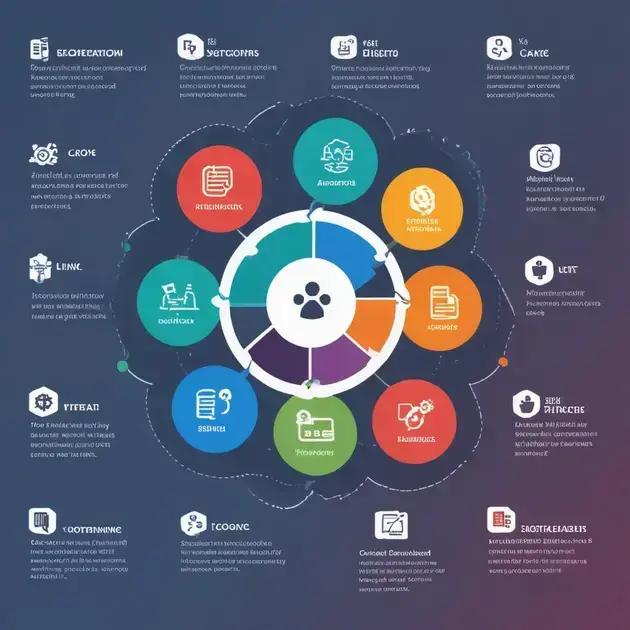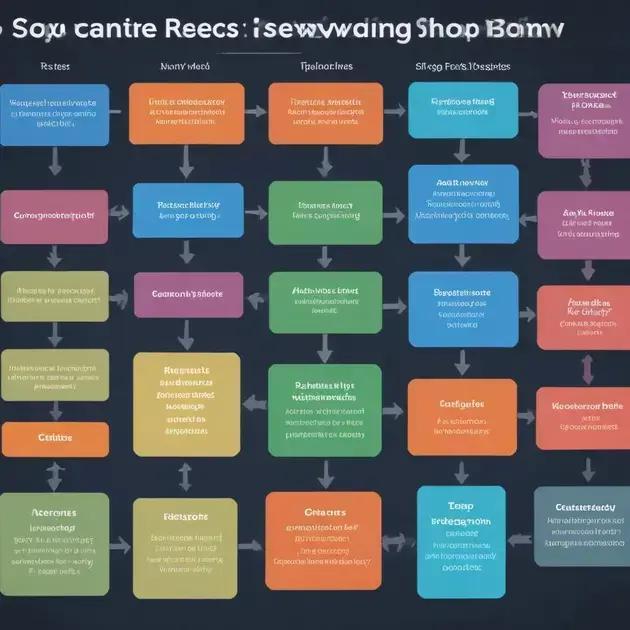Key software refers to essential tools that streamline business processes, enhance collaboration, and boost productivity. Popular examples include Trello, Slack, and Microsoft Teams, which help teams manage tasks and communicate effectively, ensuring a competitive edge in today’s fast-paced market.
Key software is reshaping how businesses manage their tasks and workflows efficiently. By leveraging key software, companies can optimize operations, enhance team collaboration, and streamline communication. In this article, we’ll delve into what key software entails, its benefits, and how to select the best options for your needs.
What is Key Software?
Key software refers to essential tools and applications that help individuals and businesses manage their tasks and resources effectively. These programs are designed to streamline workflows and enhance productivity through automation and improved organization.
Definition of Key Software
Key software encompasses a variety of applications, including project management tools, communication platforms, and data analysis programs. These tools are crucial for facilitating collaboration among teams and ensuring that projects are completed on time.
Examples of Key Software
Some popular key software includes project management applications like Trello and Asana, communication tools such as Slack and Microsoft Teams, and data analysis platforms like Tableau. Each of these tools serves a unique purpose, contributing to a more efficient workflow.
Importance of Key Software in Today’s Workplace
In today’s fast-paced work environment, key software is vital for maintaining organization and enhancing team communication. It allows businesses to adapt to changing demands and ensures that employees can work collaboratively, regardless of their physical location.
How Key Software Supports Business Goals
By implementing key software, organizations can achieve their goals more efficiently. For instance, project management tools help teams stay on track and meet deadlines, while collaboration software fosters a collaborative culture that enhances problem-solving capabilities.
Benefits of Using Key Software

Using key software offers many advantages for businesses aiming to enhance their productivity and efficiency. These tools help to streamline operations and foster better teamwork.
Enhanced Collaboration
Key software often includes collaboration features that allow team members to communicate in real-time. This capability helps teams share updates and tackle challenges together, regardless of their physical locations.
Increased Efficiency
By automating repetitive tasks, key software reduces manual workload for employees. This leads to significant time savings, allowing staff to focus on higher-value activities that drive business growth.
Better Project Management
Key software provides tools to track project progress and deadlines. With features that allow users to assign tasks and set reminders, teams can stay organized and adhere to schedules effectively.
Data Analysis and Reporting
Many key software applications come equipped with analytical tools that enable users to gather insights from their data. This analysis aids in making informed decisions and enhances strategic planning.
Cost Savings
Investing in key software can lead to cost reductions. By improving efficiency and productivity, businesses can achieve more with fewer resources, maximizing their return on investment.
Top Key Software for Businesses
Choosing the right key software can significantly impact a business’s productivity and efficiency. Here are some of the top key software applications that businesses can use to optimize their operations.
1. Trello
Trello is a project management tool that enables teams to organize tasks visually using boards, lists, and cards. It makes tracking progress simple and encourages collaboration among team members.
2. Slack
Slack is a communication platform that facilitates real-time messaging and file sharing. It helps teams stay connected, reduce email clutter, and enhance collaboration by creating specific channels for different projects.
3. Monday.com
Monday.com is a versatile work operating system that allows users to plan, organize, and track projects. With customizable templates and automation features, it makes managing workflows easier for teams of all sizes.
4. Microsoft Teams
Microsoft Teams is a collaboration platform that integrates with other Microsoft applications. It offers video conferencing, chat, and file sharing, making it an excellent choice for teams that already use Microsoft products.
5. Asana
Asana is another project management tool that enables teams to break projects into manageable tasks. With its user-friendly interface, teams can set deadlines, assign responsibilities, and monitor progress effectively.
6. Google Workspace
Google Workspace (formerly G Suite) includes tools like Google Docs, Sheets, and Drive that facilitate real-time collaboration. This suite is perfect for businesses looking for cloud-based solutions to enhance team productivity.
Adopting these key software solutions can help organizations boost their productivity and streamline processes, making it easier to achieve their business goals.
How to Choose the Right Key Software

Choosing the right key software for your business is crucial for maximizing efficiency and productivity. Here are some essential steps to help you make the right decision.
1. Assess Your Needs
The first step in choosing key software is to evaluate your specific needs. Identify the tasks you want to streamline and the challenges you face. Make a list of features that are critical for your business.
2. Consider Budget
Your budget plays a vital role in selecting software. Determine how much you are willing to invest and look for solutions that offer the best features within your budget. Remember to consider not just the upfront costs but also ongoing maintenance and subscription fees.
3. Research Options
Do thorough research on different software options available in the market. Read reviews and compare features. Check if the software has a free trial or demo version, so you can test it before making a commitment.
4. Evaluate User Experience
User experience is vital when choosing software. Look for solutions that are intuitive and easy to navigate. A user-friendly interface can help reduce the time spent on training and increase overall productivity.
5. Check Integration Capabilities
It’s essential to consider how well the software integrates with your existing tools and systems. Look for key software that can seamlessly connect with other applications you currently use to avoid disruptions in your workflow.
Making an informed choice about key software can lead to significant improvements in your business processes, enabling you to work smarter, not harder.
Future Trends in Key Software
The future of key software is constantly evolving, driven by technological advancements and changing business needs. Staying informed about upcoming trends can help businesses prepare and adapt effectively.
1. Increased Use of Artificial Intelligence
Artificial Intelligence (AI) is expected to play a significant role in key software solutions. From automating processes to providing insights through data analytics, AI tools will enhance decision-making and efficiency in various sectors.
2. Integration of Cloud Computing
Cloud computing continues to gain popularity, allowing businesses to access software remotely and collaborate in real time. This trend reduces the need for on-premises infrastructure, leading to greater flexibility and cost savings.
3. Enhanced Focus on Cybersecurity
As businesses increasingly rely on software, the importance of cybersecurity cannot be overlooked. Future key software will likely incorporate advanced security features to protect user data and mitigate risks associated with cyber threats.
4. Rise of Low-Code/No-Code Platforms
Low-code and no-code development platforms are emerging as popular solutions, enabling users to create custom applications without extensive programming knowledge. This trend empowers businesses to tailor software to their unique needs quickly.
5. Emphasis on User Experience
The focus on user experience will continue to grow, with software designers prioritizing intuitive interfaces and smooth interactions. A more user-friendly experience will enhance adoption rates and contribute to overall productivity.
By understanding these trends, businesses can make more informed decisions when selecting and implementing key software tools, ensuring they remain competitive in an ever-changing market.
In Summary: Embracing Key Software for Success
Key software is essential for modern businesses looking to improve efficiency and productivity. By understanding the benefits and choosing the right tools, companies can simplify processes, enhance collaboration, and ultimately drive growth.
As technology evolves, keeping an eye on future trends like AI integration and cloud computing is crucial. These advancements will continue to shape how businesses operate and compete.
By adopting the right key software, businesses can not only thrive in today’s market but also prepare for the future. Embrace these tools to unlock new levels of productivity and maintain a competitive edge.
FAQ – Frequently Asked Questions About Key Software
What is key software and why is it important?
Key software refers to essential tools that help businesses manage tasks effectively, improving productivity and collaboration.
How can key software enhance team collaboration?
Key software often includes features like real-time messaging and project management tools, making it easier for teams to communicate and work together.
What factors should I consider when selecting key software?
Consider your business needs, budget, user experience, integration capabilities, and the specific features you require when choosing key software.
Are there examples of popular key software for businesses?
Yes, some popular key software includes Trello, Slack, Monday.com, Microsoft Teams, and Asana.
How can I ensure the chosen software integrates with my existing tools?
Check if the software offers integration options with applications you already use, and read reviews to see how well it works with other tools.
What trends should I be aware of in key software development?
Future trends include increased use of AI, cloud computing, low-code platforms, enhanced cybersecurity measures, and a greater emphasis on user experience.




